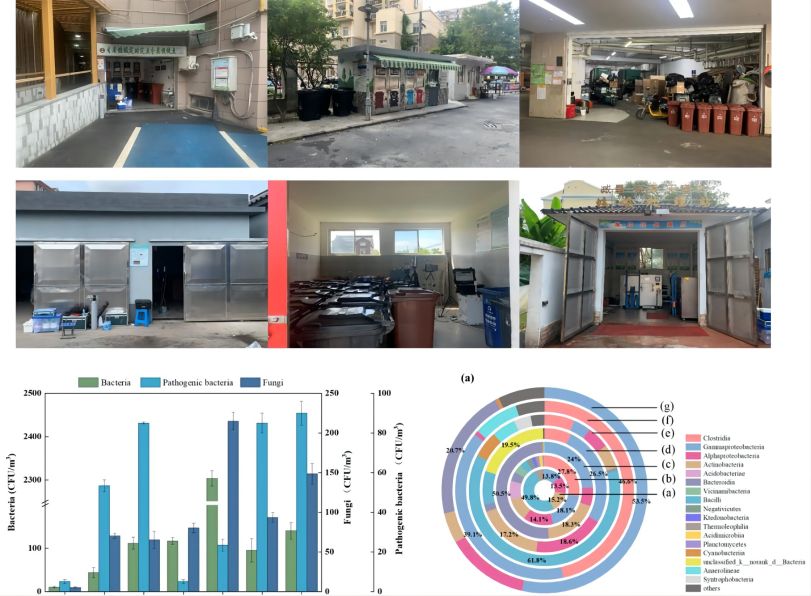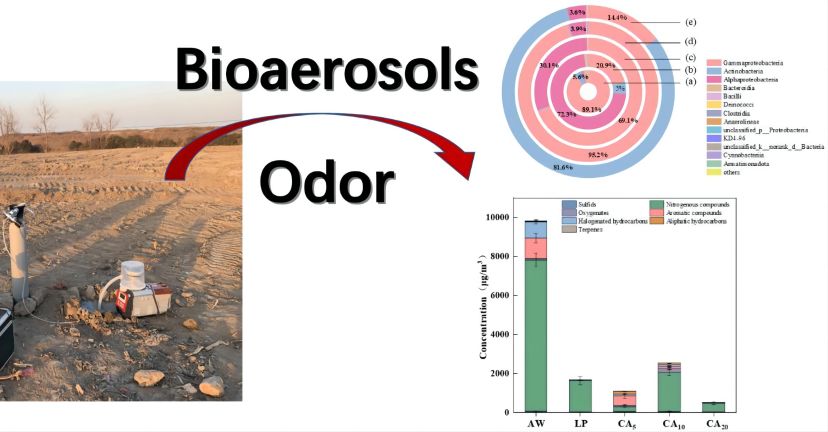Odor emissions were one of the most severe problems and often complained by local residents, and it released along the whole municipal solid waste management system, from the waste delivery, collection, transportation to final disposal, due to the biodegradation and volatilization, which resulted in "NIMBY effect".

Since the implementation of the waste classification policy in Shanghai in July 2019, combined with the pandemic outbreak in Shanghai, the release of odor and the potential risks from the source separation points has raised concerned due to the forced breaking of rubbish bags of food waste. The household food waste was piled up layer by layer and formed an anaerobic environment, and amounts of odors, such as hydrogen sulfide, NH3 and the bioaerosols combed were released from the waste bins, which would pose a health risk to residents. At present, the source control is mainly relied on the chemical deodorant spraying to inhibit the biodegradation process of microorganisms.

During the final landfill disposal, not only odors, but also the microorganisms in a heap, under mechanical and other external forces, would be released into the air to form bioaerosols and pose a threat to human’s health around. Bioaerosols composition was complex, including bacteria, viruses, fungi, etc. Inhalation of some pathogenic bacteria would cause infection of human organs. The identification of the generation rate and the emissions characteristics of bioaerosols from different disposal areas and the hazards to human health need to be further explored, to reduce the pollution.

Prof. Ziyang Lou from the Shanghai Jiao Tong University, M.S. Yanfeng Yang from the Shanghai University of Electric Power, Associate Prof. Ruina Zhang from Shanghai CHENGTOU Group Corporation and Shanghai Engineering Research Center of Solid Waste Treatment and Resource Recovery team members have worked jointly and systematically expound on the releasing law of bioaerosols/odors in the process of municipal solid waste landfilling. This study entitled “Bioaerosol emissions variations in large-scale landfill region and their health risk impacts” is published online in Frontiers of Environmental Science & Engineering in 2022.
In this study, the research team found that the levels of culturable bacteria and fungi in landfill were around 33–22778 CFU/m3 and 8–450 CFU/m3, and the active-working area and the covered area closed were the maximum and minimum emission sources, respectively, meaning that the bioaerosols were mainly released from the areas related with the fresh waste landfilled areas. Acinetobacter sp., Massilia sp., Methylobacterium-Methylorubrum sp. and Noviherbaspirillum sp. were the main bacterial populations. The corresponding health risks via inhalation were the main contribution, with four orders of magnitude higher than that of skin contact. Active-working area showed the critical point for non-carcinogenic risks, with a hazard quotient of 1.68, where 80 m protection distance is recommended for on-site workers’ protection, plus more careful protection measures.
This study comprehensively and systematically investigated the release characteristics of bioaerosols in different functional areas of the landfill and combined with the CALPUFF model to identify the impact distance, which provides a new insight into the whole-process management of municipal solid waste. The detailed source apportionments of odors present the basic and important information for the odor on line measurements devices developments.